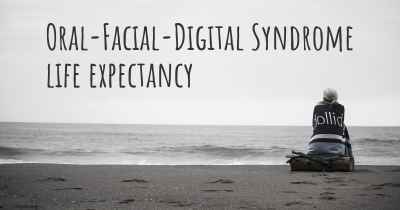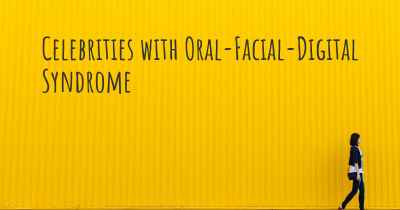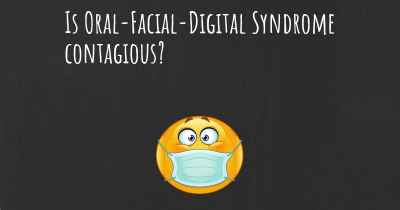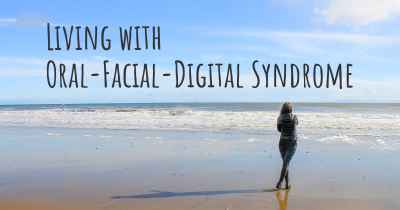What is the history of Oral-Facial-Digital Syndrome?
When was Oral-Facial-Digital Syndrome discovered? What is the story of this discovery? Was it coincidence or not?

Oral-Facial-Digital Syndrome: A Historical Overview
Oral-Facial-Digital Syndrome (OFDS) is a rare genetic disorder that affects the development of the oral cavity, face, and digits. It is characterized by a wide range of symptoms and can vary in severity from mild to severe. The history of OFDS dates back to the early 20th century when the first cases were reported and the syndrome was recognized as a distinct medical condition.
Early Discoveries and Classification
The first documented case of OFDS was reported in 1954 by a French physician named Jean-Pierre Fryns. He described a family with multiple affected individuals who exhibited similar facial and oral abnormalities. This initial observation led to further investigations and the identification of additional cases.
Over the years, several subtypes of OFDS have been identified based on the specific combination of symptoms and genetic mutations involved. Currently, there are at least 13 known subtypes, each with its own distinct set of features and genetic causes.
Genetic Basis and Advances in Understanding
Advancements in genetic research have played a crucial role in understanding the underlying causes of OFDS. In the early years, the genetic basis of the syndrome remained largely unknown. However, with the advent of molecular techniques, scientists were able to identify specific genes associated with different subtypes of OFDS.
One of the major breakthroughs came in 2004 when mutations in the OFD1 gene were identified as the cause of the most common subtype, known as OFD1 syndrome. This gene is located on the X chromosome and its mutations result in a wide range of developmental abnormalities affecting the oral cavity, face, and digits.
Clinical Features and Diagnosis
OFDS is characterized by a diverse array of clinical features, which can make diagnosis challenging. Some of the common features include cleft lip and/or palate, oral frenulae, dental abnormalities, facial asymmetry, and digital anomalies such as extra fingers or toes.
Diagnosis of OFDS is typically based on clinical evaluation and the presence of characteristic signs and symptoms. Genetic testing can also be performed to confirm the diagnosis and identify the specific subtype of OFDS.
Treatment and Management
As of now, there is no cure for OFDS, and treatment primarily focuses on managing the symptoms and improving the quality of life for affected individuals. The management of OFDS involves a multidisciplinary approach, with various specialists such as geneticists, orthodontists, and speech therapists working together to address the specific needs of each patient.
Treatment options may include surgical interventions to correct cleft lip/palate or other facial abnormalities, orthodontic procedures to address dental issues, and supportive therapies to assist with speech and motor development.
Current Research and Future Perspectives
Research on OFDS is ongoing, with scientists striving to gain a deeper understanding of the genetic mechanisms underlying the syndrome. This knowledge is crucial for the development of targeted therapies and potential gene-based treatments in the future.
Additionally, advancements in genetic testing technologies have made it easier to diagnose and classify different subtypes of OFDS accurately. This has led to improved genetic counseling for affected families, allowing them to make informed decisions regarding family planning and potential recurrence risks.
Conclusion
Oral-Facial-Digital Syndrome is a complex genetic disorder with a rich history of discovery and understanding. From its initial recognition as a distinct medical condition to the identification of specific genetic mutations, the field of OFDS research has made significant progress. While there is still much to learn, ongoing research and advancements in medical care offer hope for improved diagnosis, management, and potential future treatments for individuals affected by this rare syndrome.








